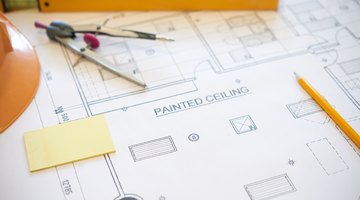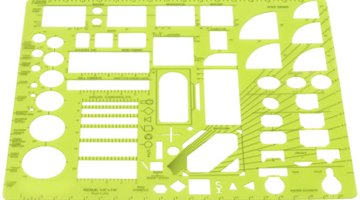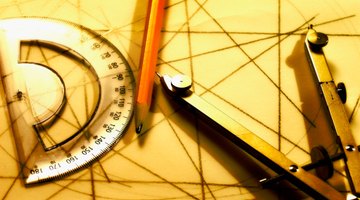Basic Drafting Tools & Their Uses
A drafter draws blueprints to guide the construction of anything from residential construction to jet aircraft. To draw clean and understandable pictures and instructions, the drafter uses specialized tools of the trade.

Some of the tools have been around for centuries while other tools have only been developed in the past few decades and are continuing to improve as new technologies become available and affordable.
Drafting Table

A drafting table assists a person who is drafting by positioning the work at an angle that makes it easier to see and work on. The table tilts to various angles depending on the preference of the drafter and the task at hand. Drafting table styles include tables designed for use with computers, split top tables where part of the table tilts and the other part remains flat to provide easy access to other tools or drawings. Lighted tables provide back lighting that makes drawings very clear and easy to see.
Drawing Tools

Drafters need pencils that leave clean and precise lines. The graphite in drafters' pencils ranges from much softer to much harder than regular pencils. Each grade has a specific purpose. Harder pencils draw very thin dark lines and are used for things such as dimension lines and lettering. Softer, more blunt pencils draw wider lines and mark things such as walls or borders. In addition to pencils, drafters use templates to guarantee perfect and consistent lettering and figures.
Measuring Tools

Drafters use a wide variety of measuring tools in addition to tapes and rulers. A compass and protractor help the drafter precisely measure angles and calculate and draw arcs, circles and curved lines. T-squares help drafters draw straight lines and help identify when a line is vertical. Everything a drafter does has to have exact measurements, so drawing everything in proper proportion to other lines is critical. Scales help a drafter keep the proportions accurate. An engineer's scale is marked so that one inch represents many feet and are used to draw roads and sewer systems and details in other very large projects. Architect's scales measure in smaller scale, with one inch representing just a few feet.
Computers

The first computer aided drafting occurred in the 1960s. Since then, new technology has completely changed the concept of computer assisted drafting. The first programs directed a computer to automatically draw perfectly straight lines and do the necessary calculations to determine angles and other measurements to create a computer generated version of the traditional two dimensional blueprint. Today's computers can generate three dimensional images on screen and can even test a model's structural integrity by accounting for forces of wind, water or earthquakes. With three dimensional "printing" available, computers can even generate three dimensional models.
References
Writer Bio
Legal - I have 15+ years experience as a trial attorney handling criminal and civil cases. I taught classes at both the Anchorage Police Academy, at the Alaska State Crime Lab, and at Alaska Junior College. Motorcycles - I have a published book for beginning women riders, and own and operate a web forum with over 800 members from 10 countries. I am known in the motorcycling community as a distance rider and mentor for new riders.
More Articles



